Abstract
1. The release of vasopressin in response to haemorrhage and the effects of vasopressin infusions on blood pressure and heart rate have been investigated in anaesthetized dogs. Haemorrhage was produced by the method of Lamson & de Türk (1945), which allows for a precise control of the changes in arterial blood pressure.
2. Blood samples were collected from an external jugular vein, from a femoral vein or from a femoral artery and extracted with alcohol; blood extracts were assayed for antidiuretic activity.
3. Haemorrhage experiments showed that vasopressin secretion is increased when the fall in diastolic blood pressure (diastolic ΔP) is 25 mm Hg or more. Mild hypotensions (diastolic ΔP ranging from 21 to 30 mm Hg) produce an average fourfold increase in the concentration of vasopressin in blood. Such increase is maintained throughout the oligaemic period. Severe hypotensions produce, in most cases, a biphasic secretory response, with an initial high peak followed by a lower, constant, secretory plateau. In all experiments, the retransfusion of blood restored vasopressin to control levels.
4. Vasopressin infusion experiments showed that the amounts of hormone secreted in response to haemorrhage are sufficient to cause vasopressor response, provided that the buffering action of blood pressure regulation mechanisms is suppressed. It was also found that the amounts of vasopressin secreted in response to haemorrhage are apparently adequate, if the function of such secretion is to combat the hypotension which follows haemorrhage.
5. The effect of hypophysectomy on the blood pressure of animals previously submitted to bilateral division of the vagi and sinus nerves (deafferented animals) was also investigated. It was found that hypophysectomy is followed by a fall in arterial blood pressure which is positively correlated to the previous existing amounts of vasopressin. The time course of this hypotension is similar to that following the stopping of an infusion in a deafferented hypophysectomized animal. In some experiments it was shown that, following hypophysectomy, blood pressure can be restored to its pre-hypophysectomy level by an adequate infusion of vasopressin.
6. It is proposed that the release of vasopressin in response to stimuli arising from cardiovascular sensory receptors plays a part in the mechanism of blood pressure regulation.
Full text
PDF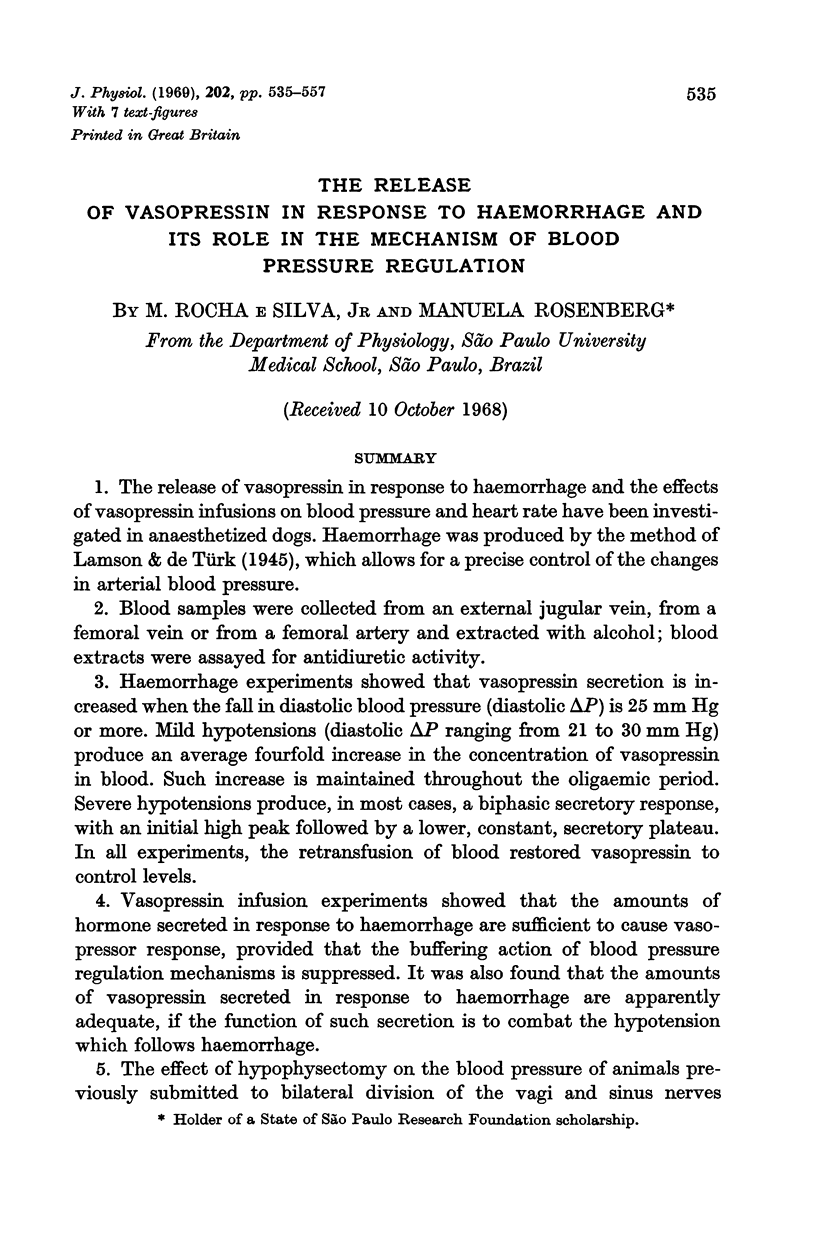
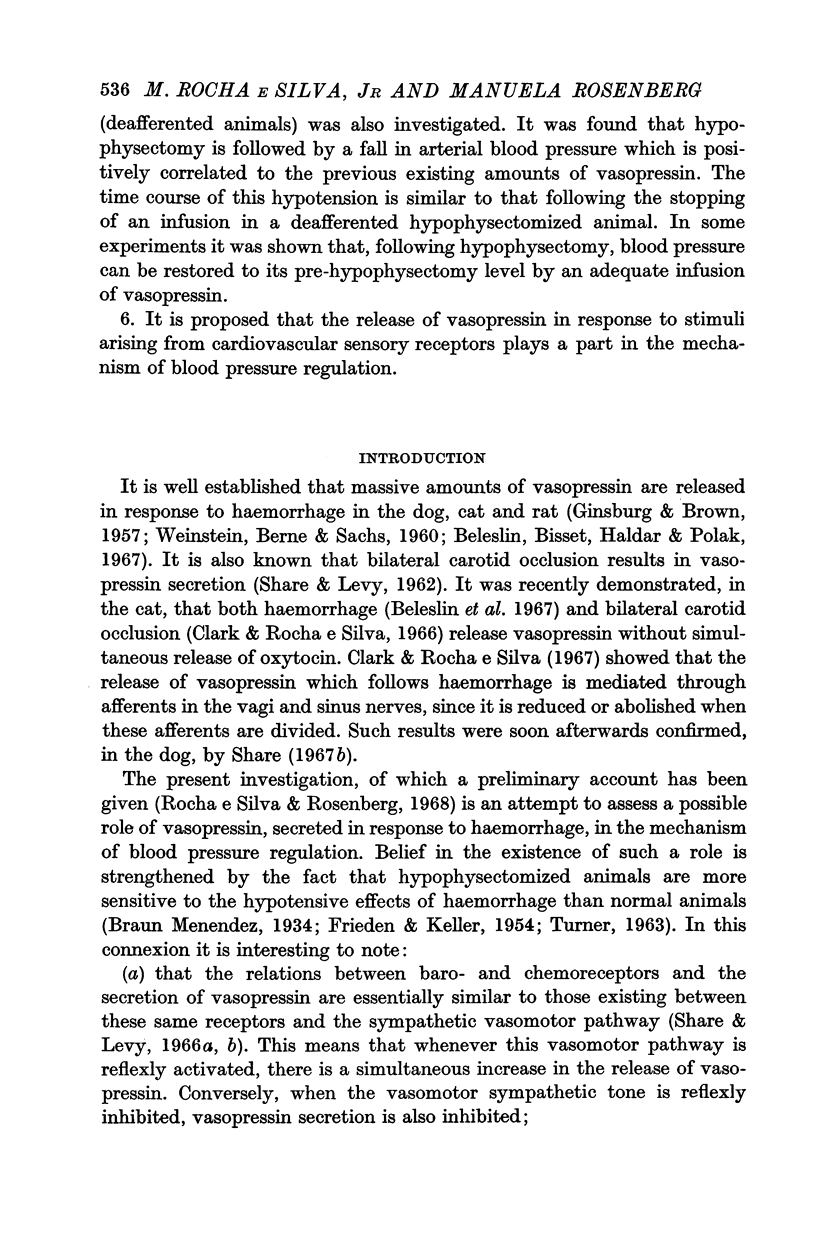
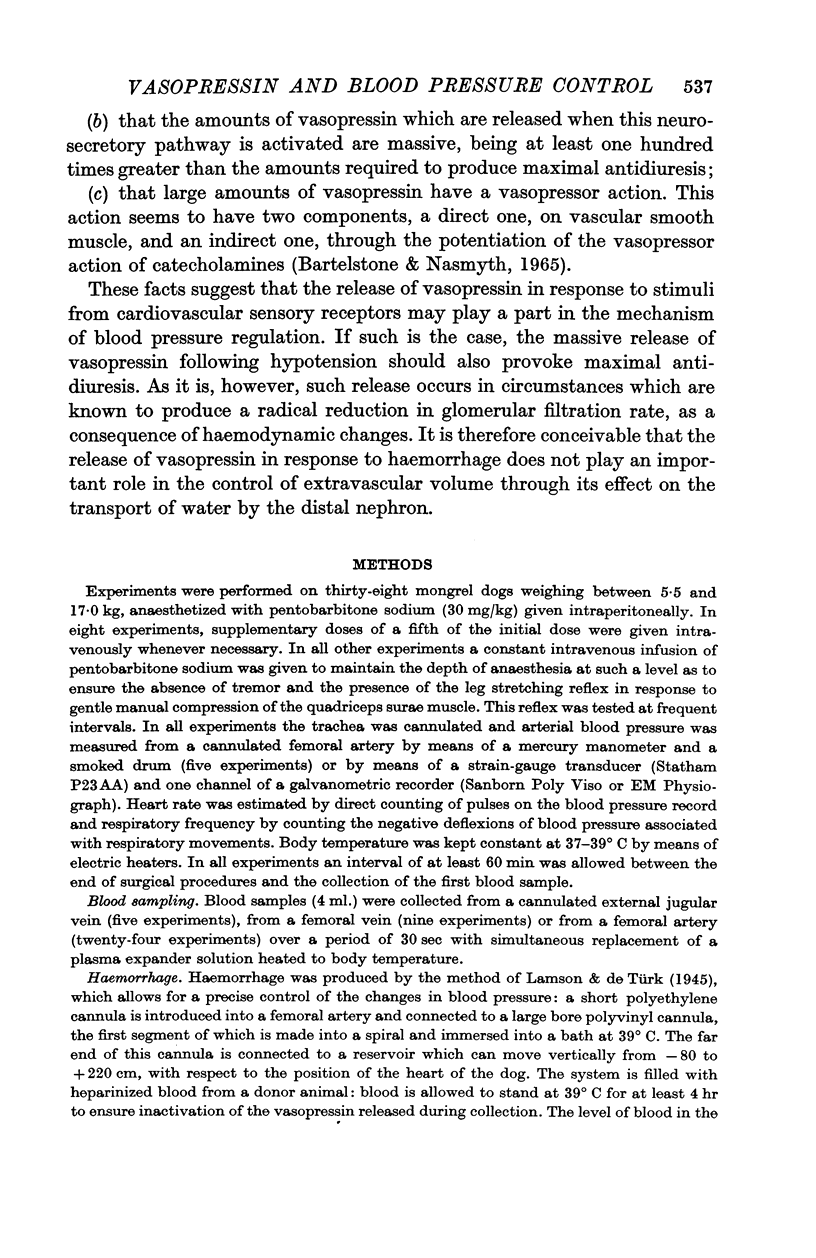
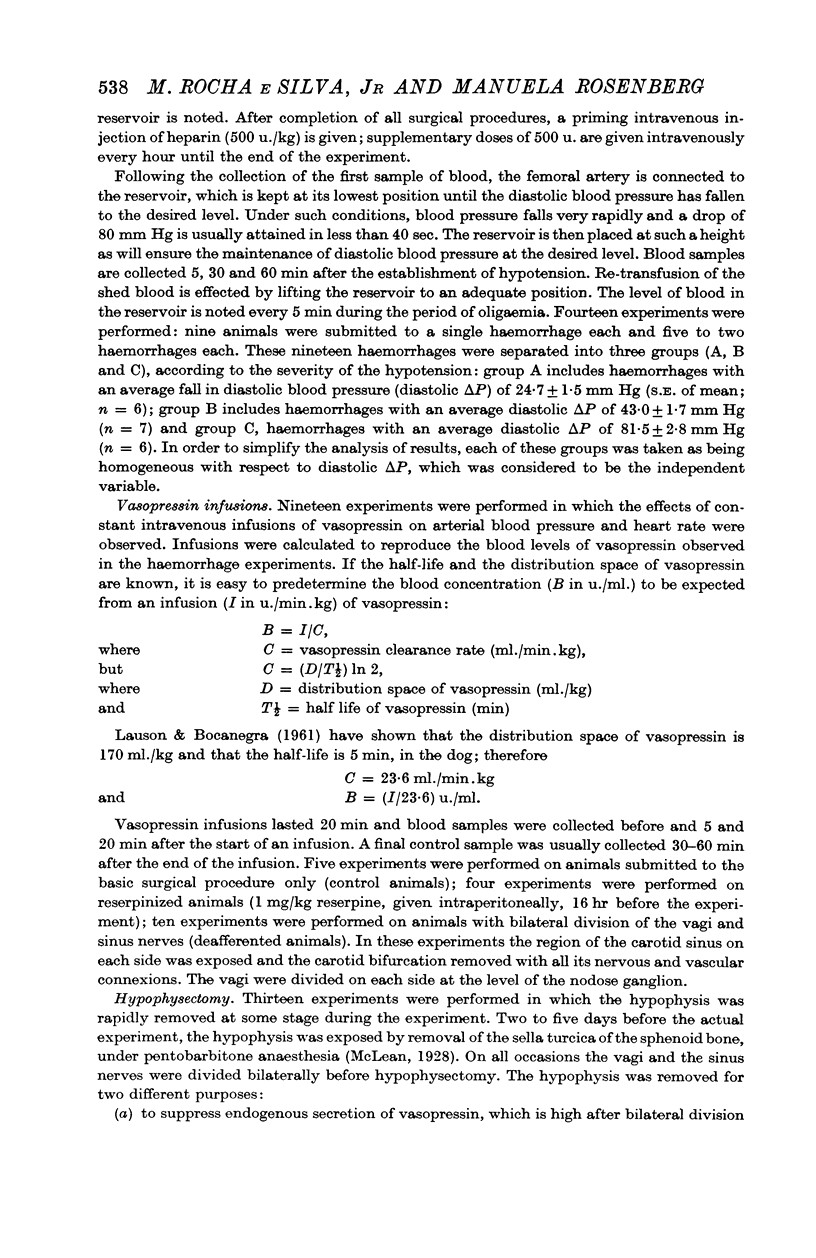
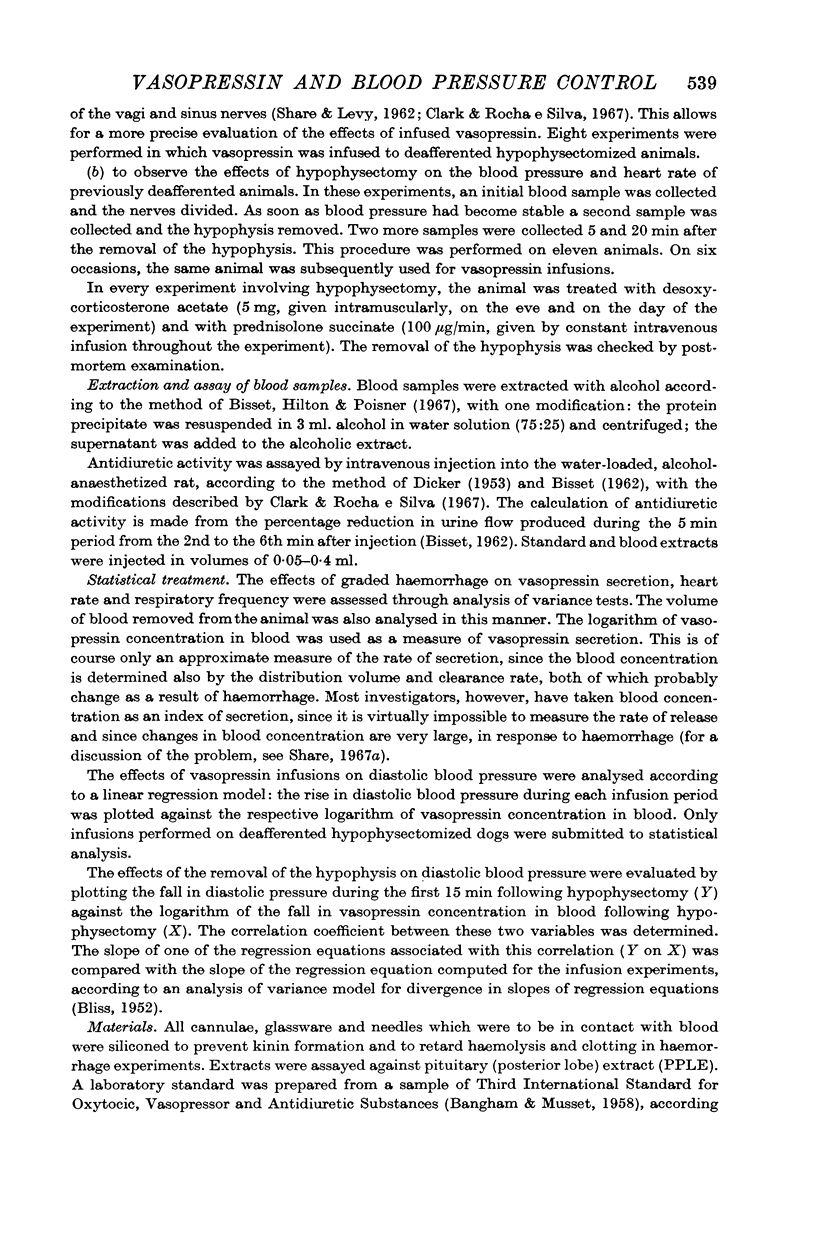
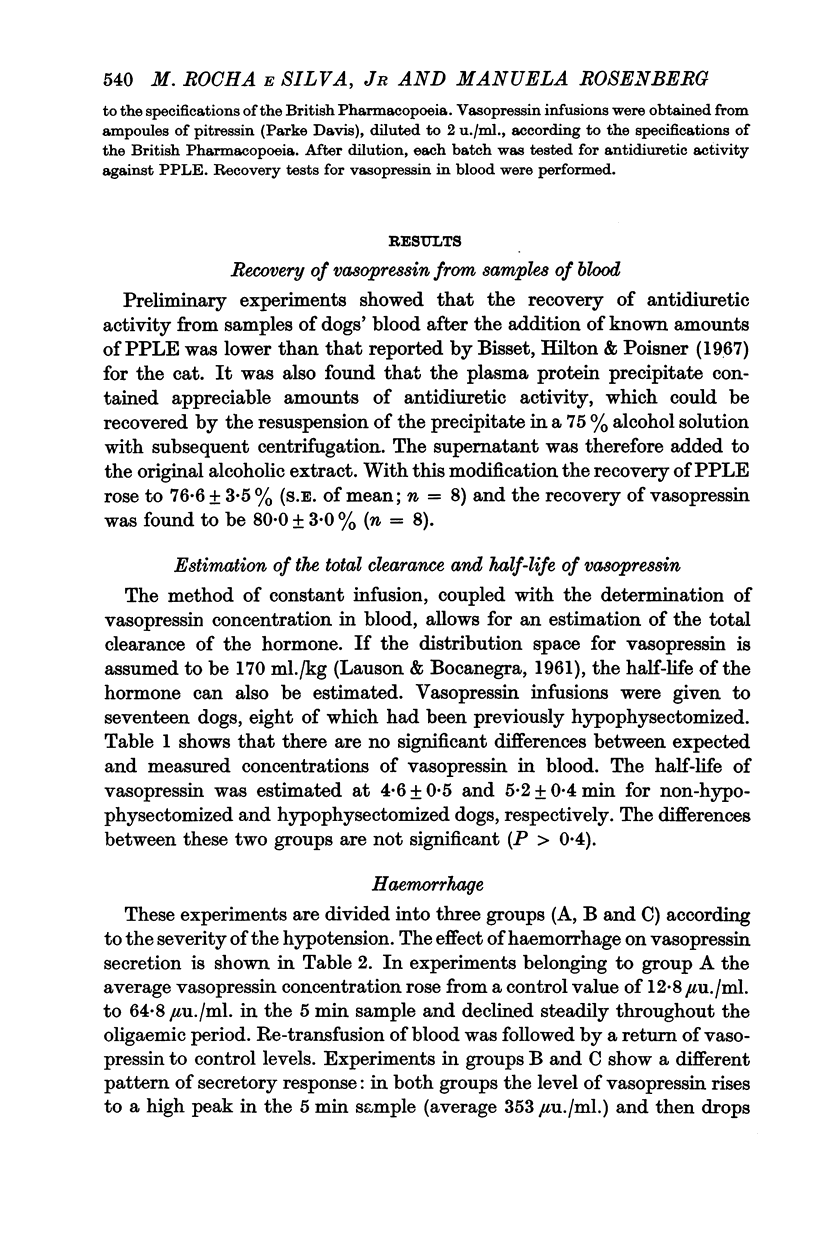
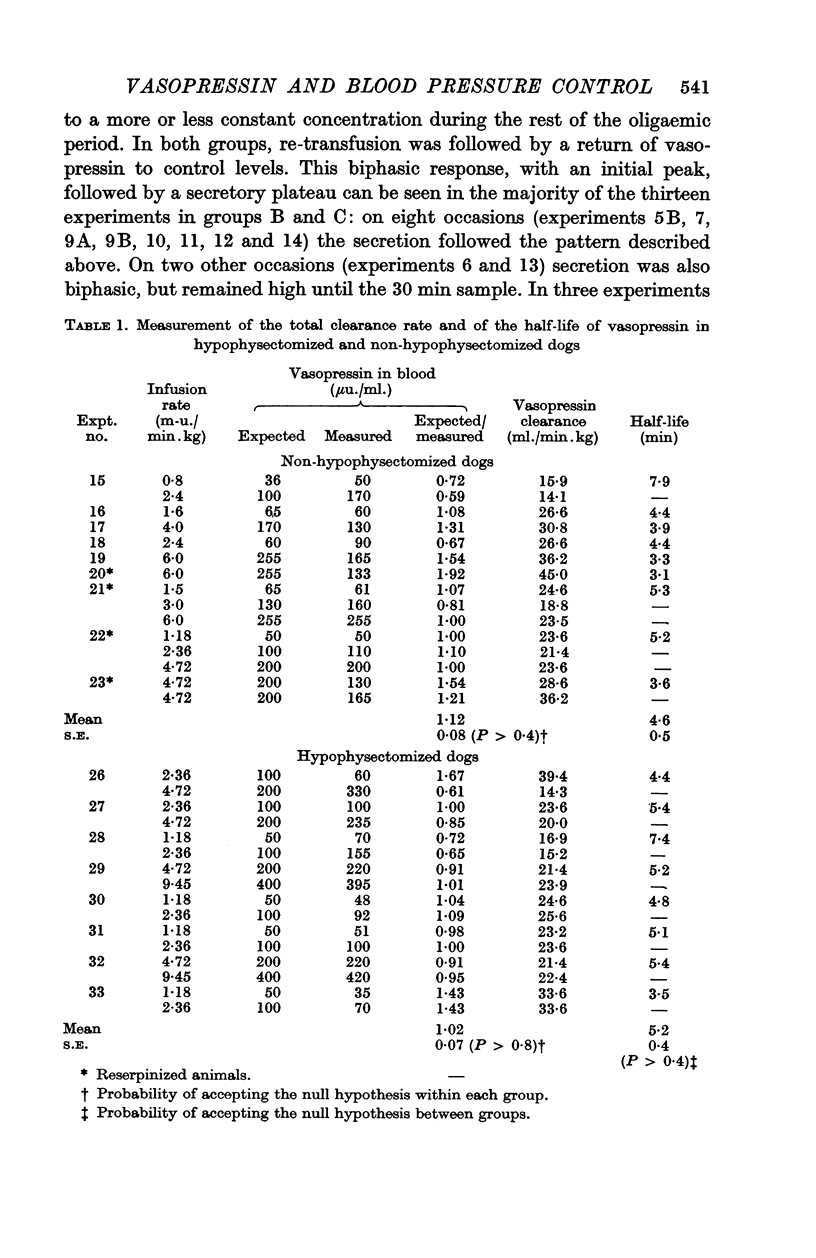
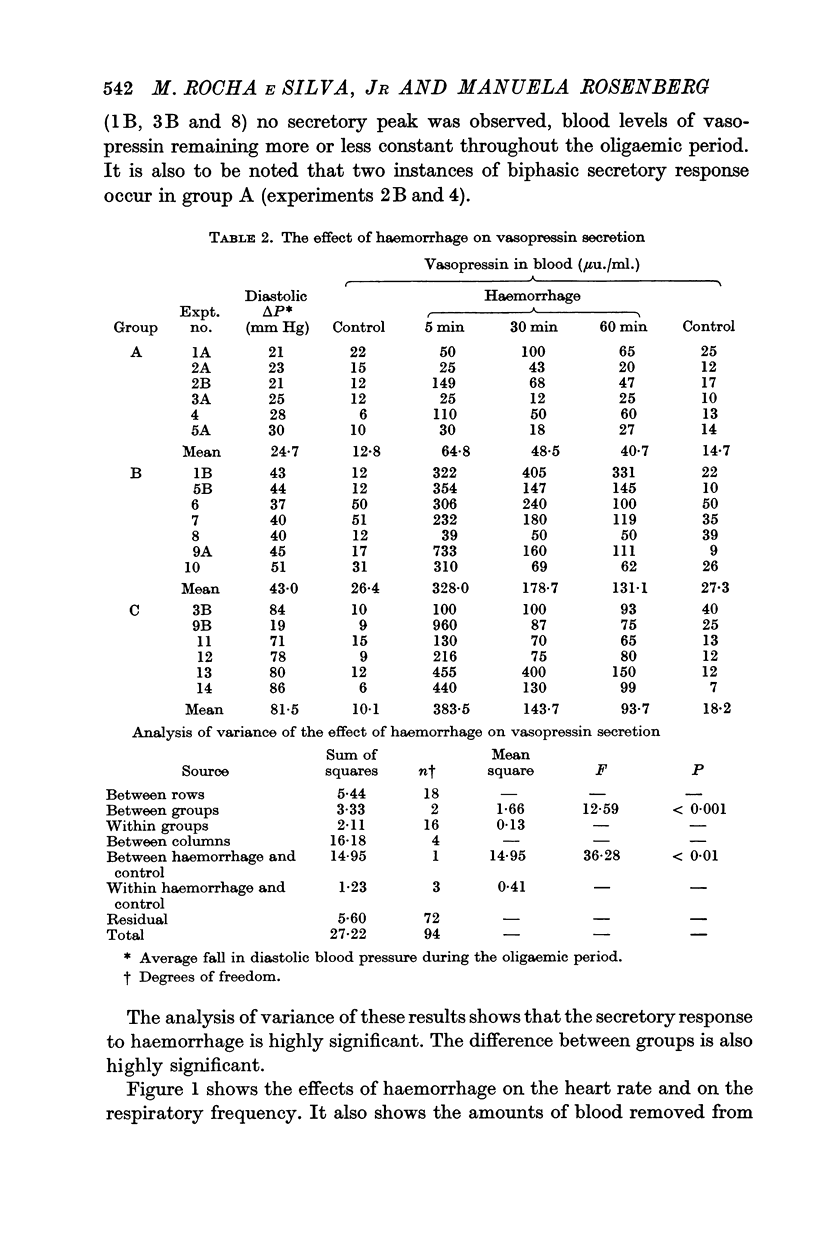

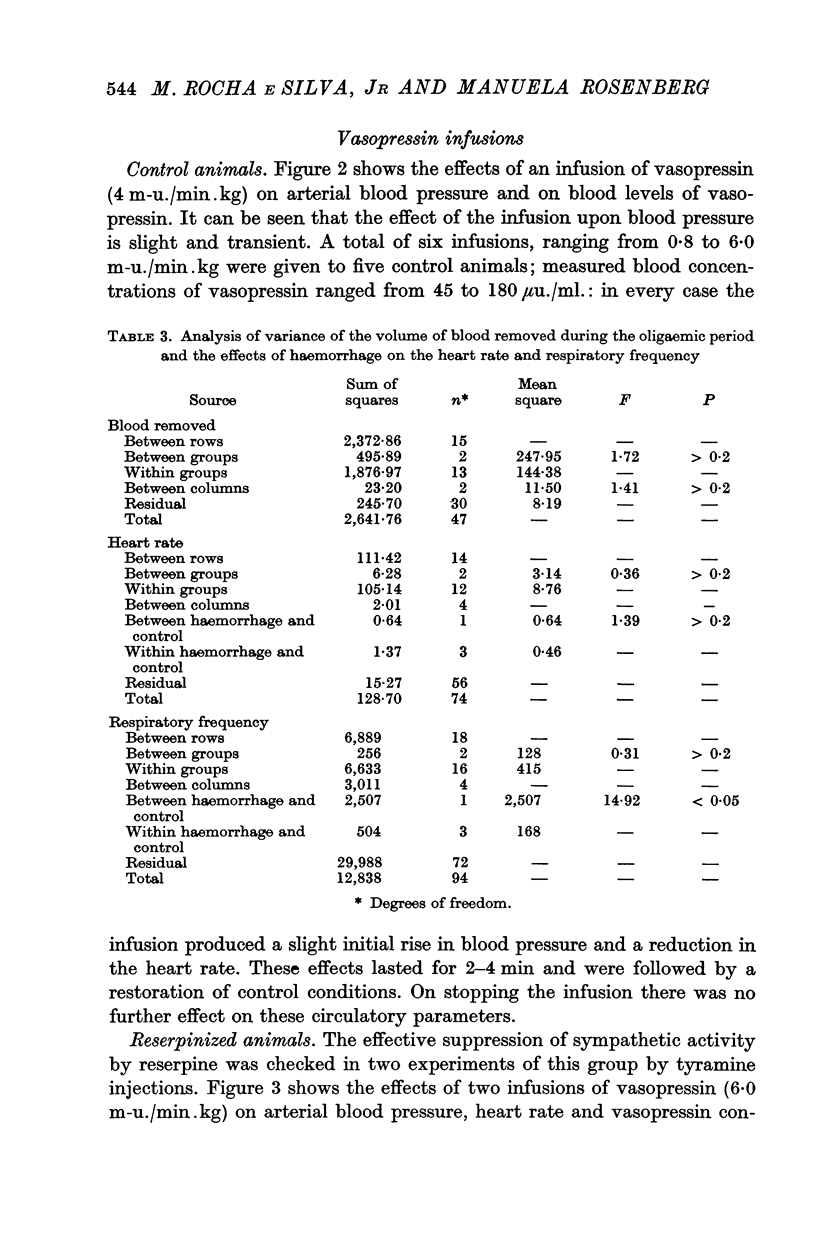
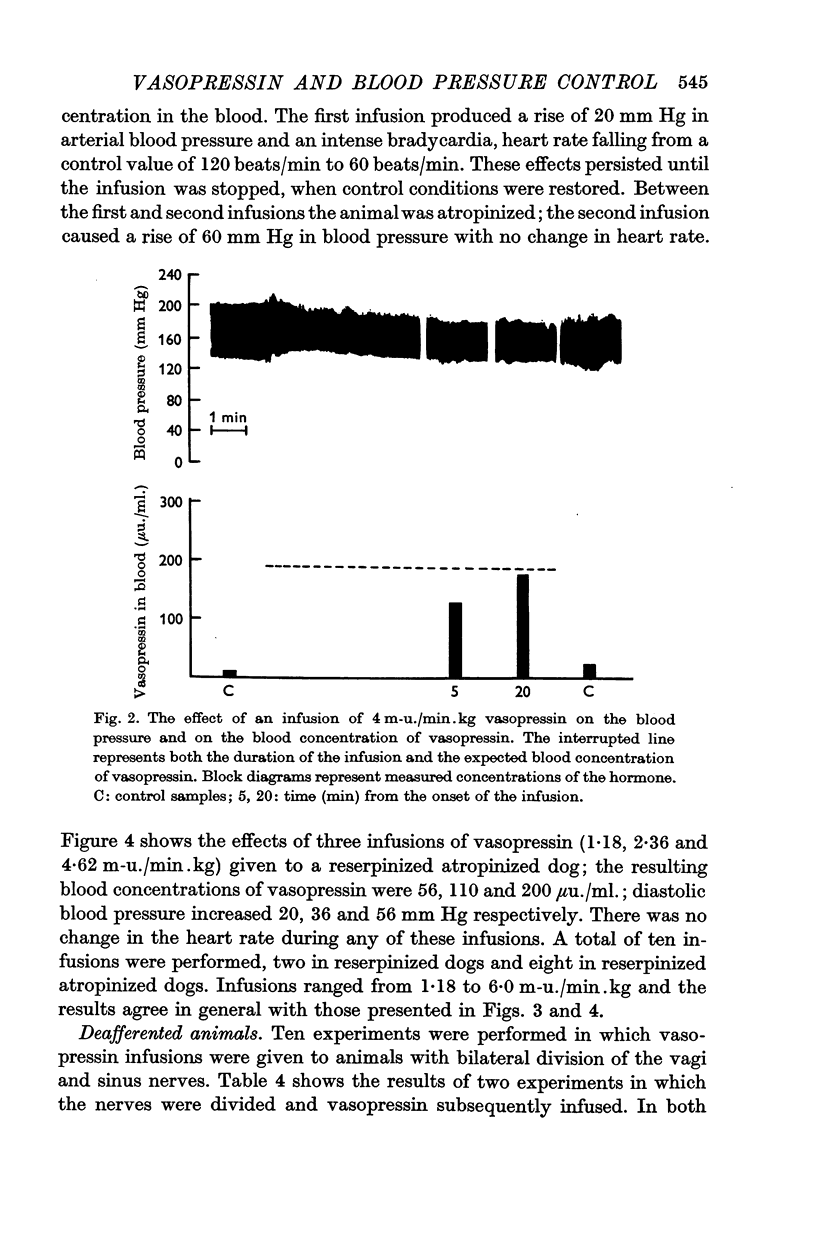
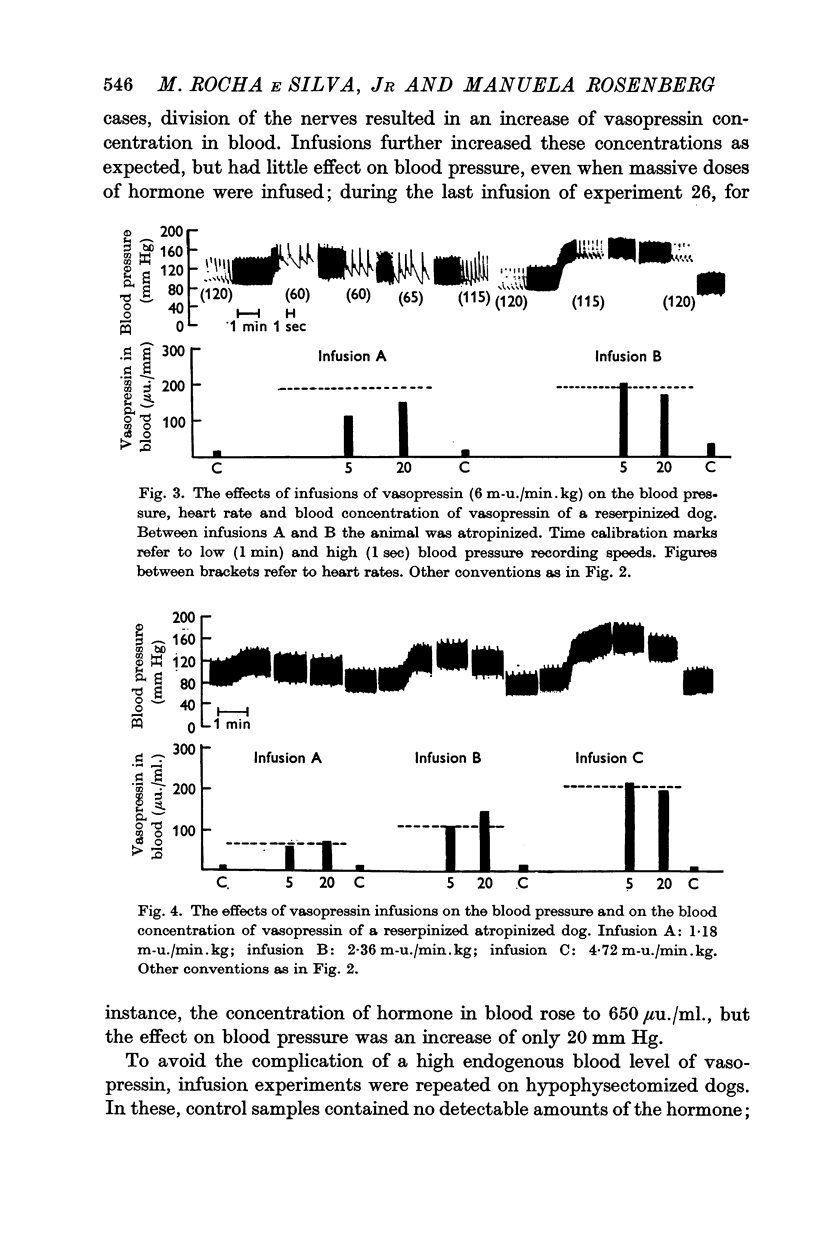
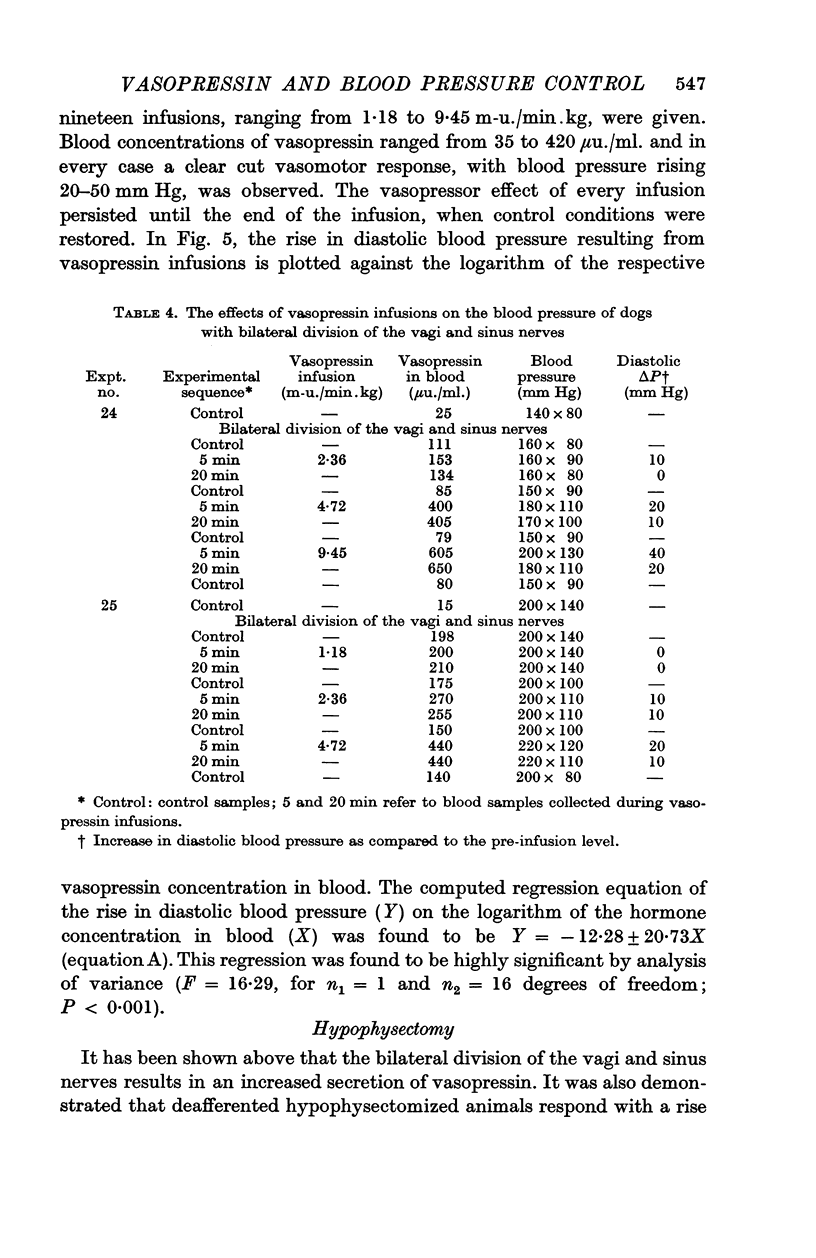
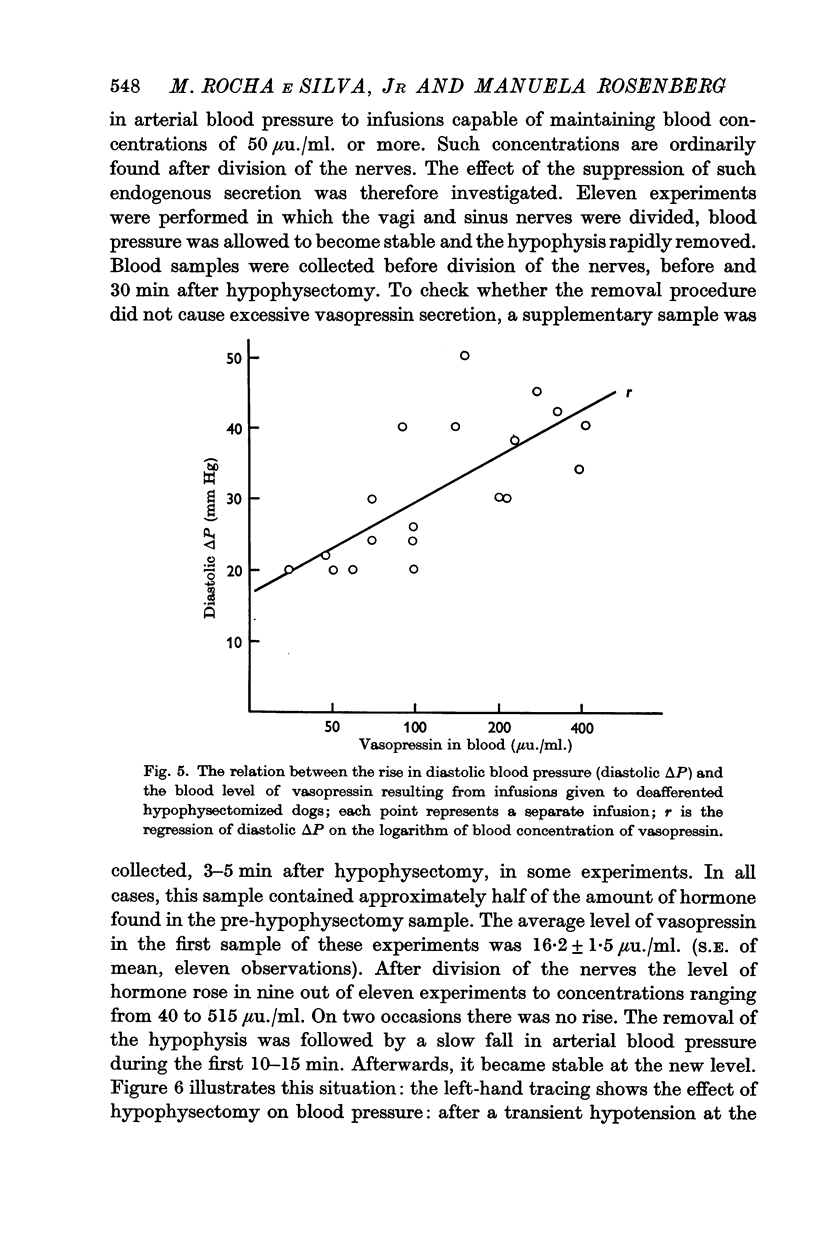
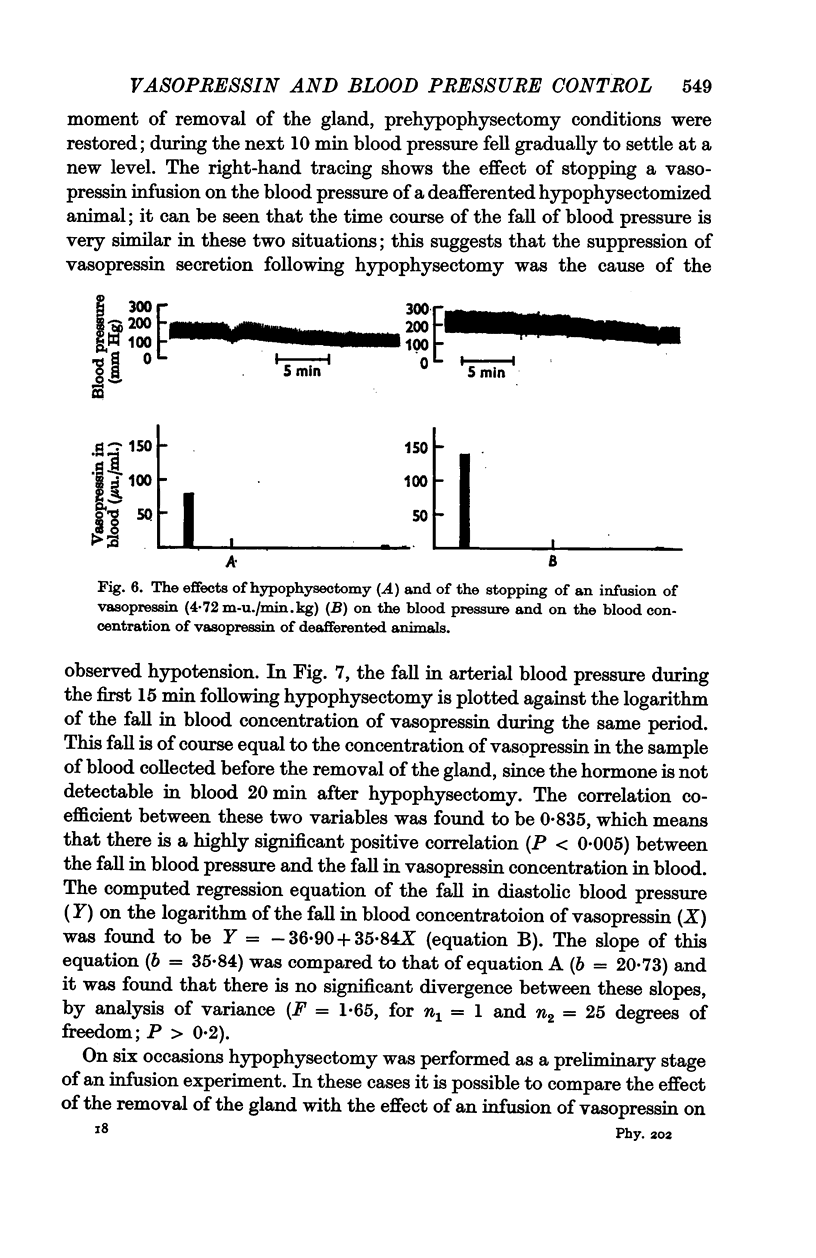

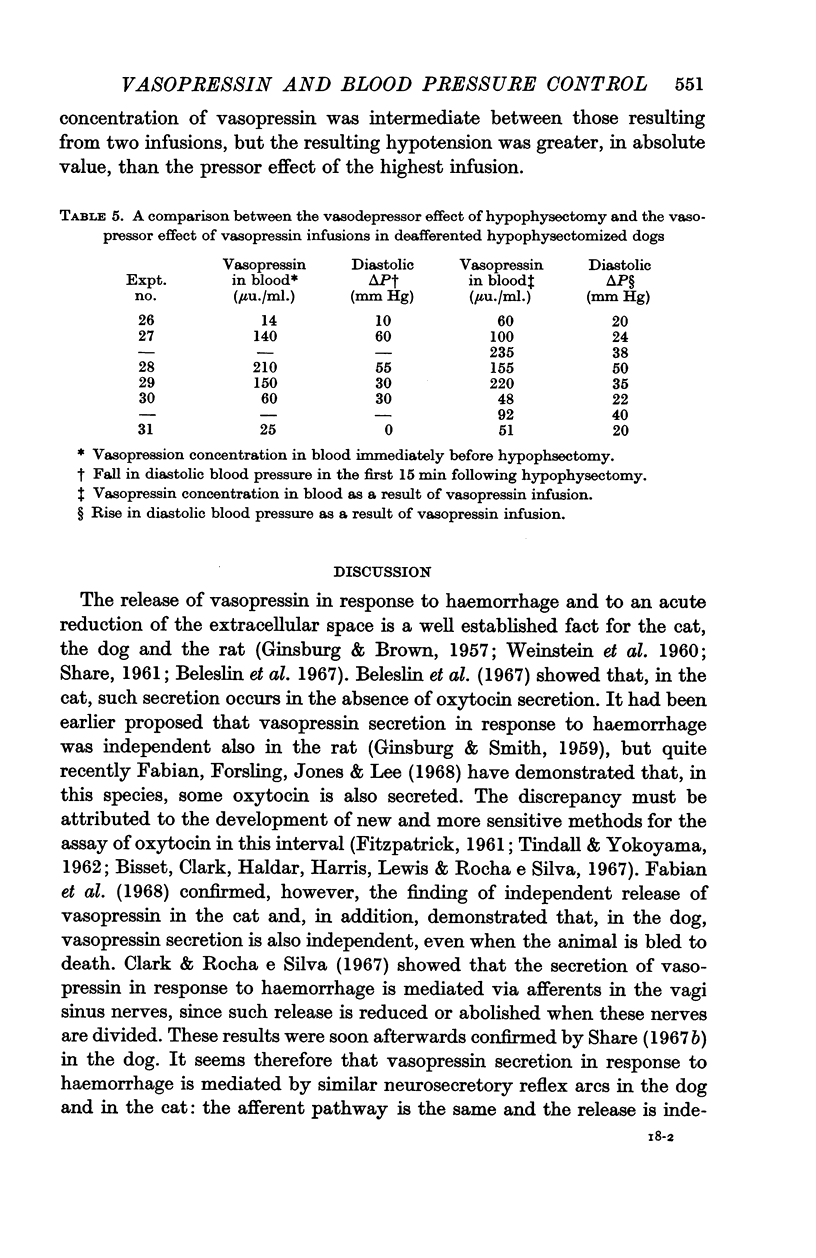
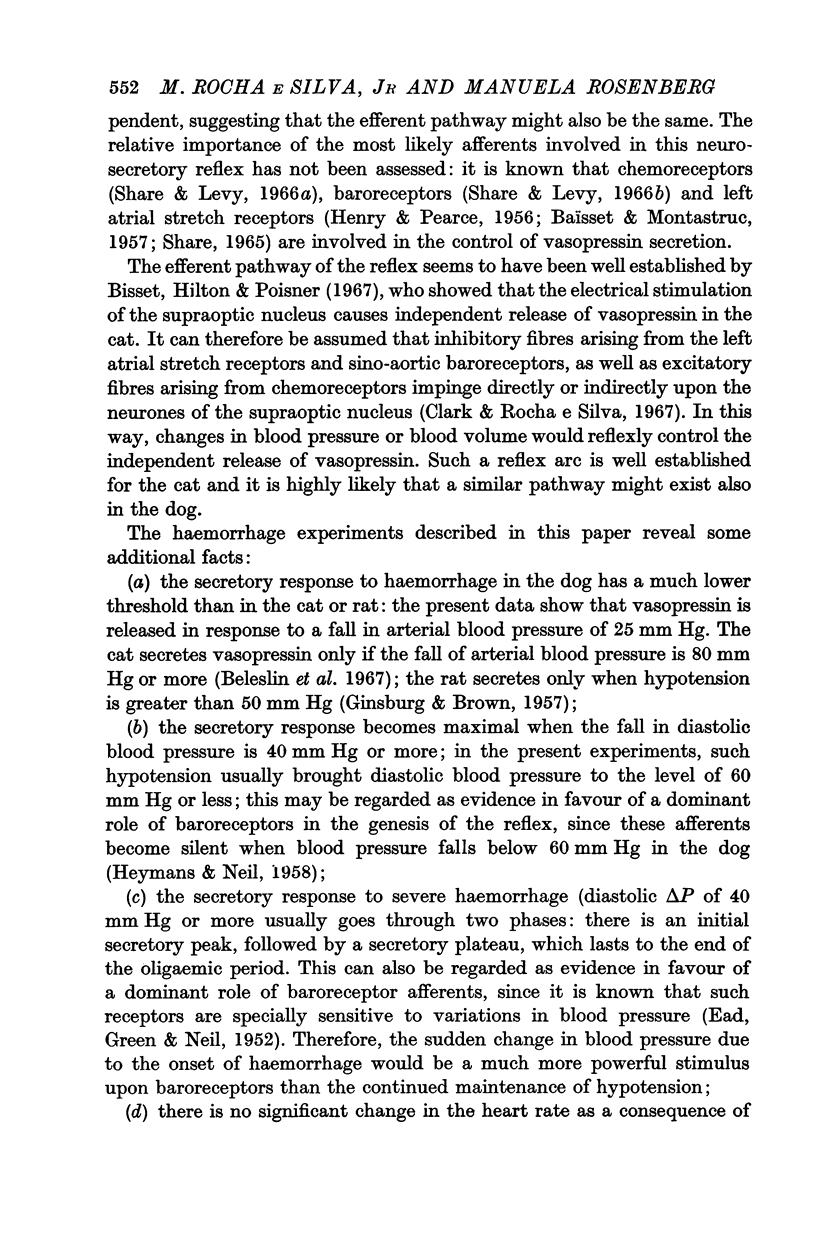
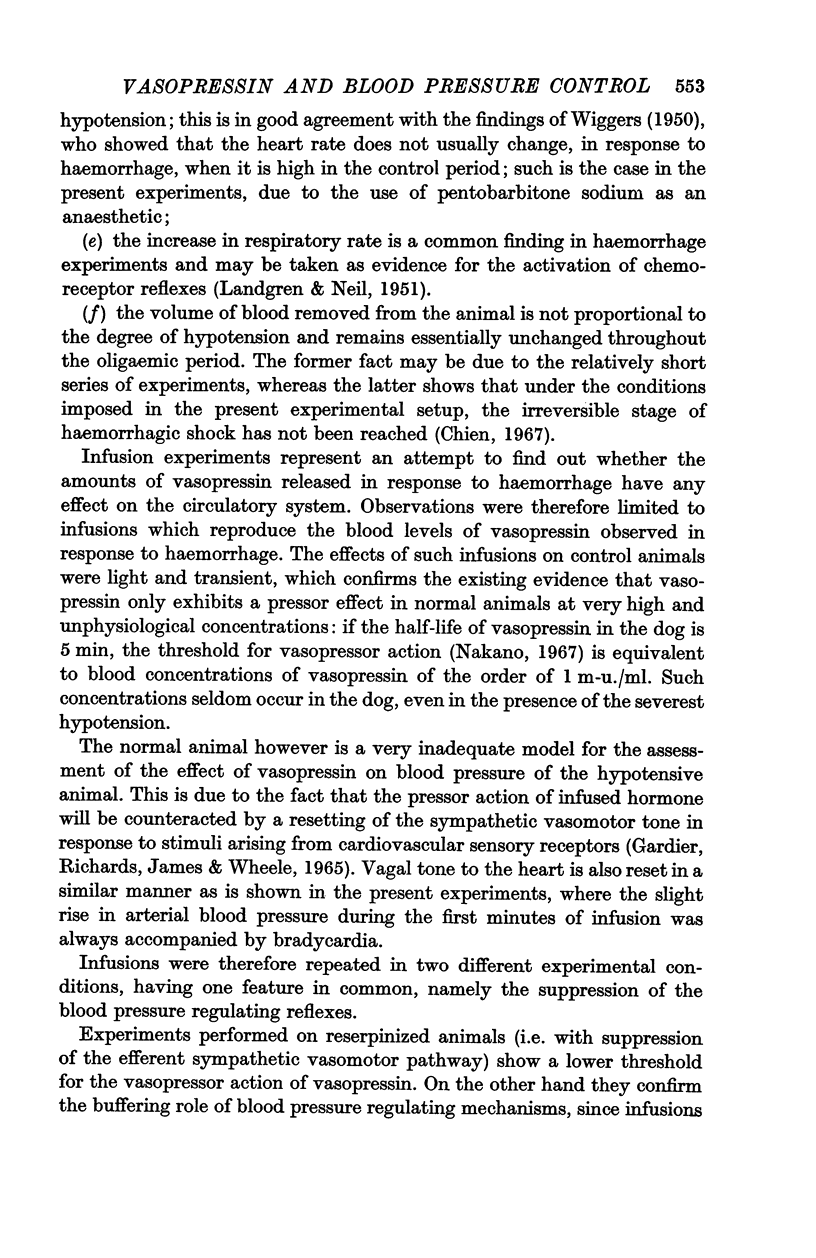
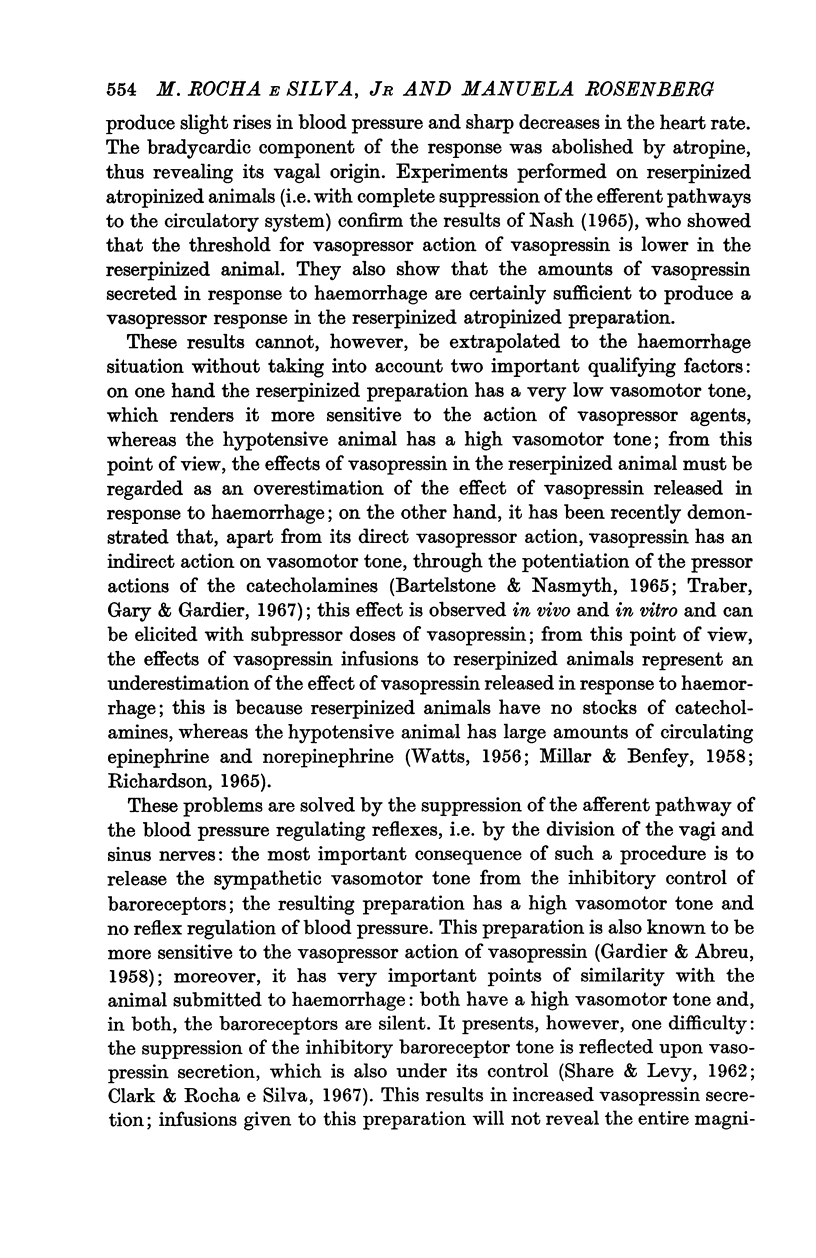
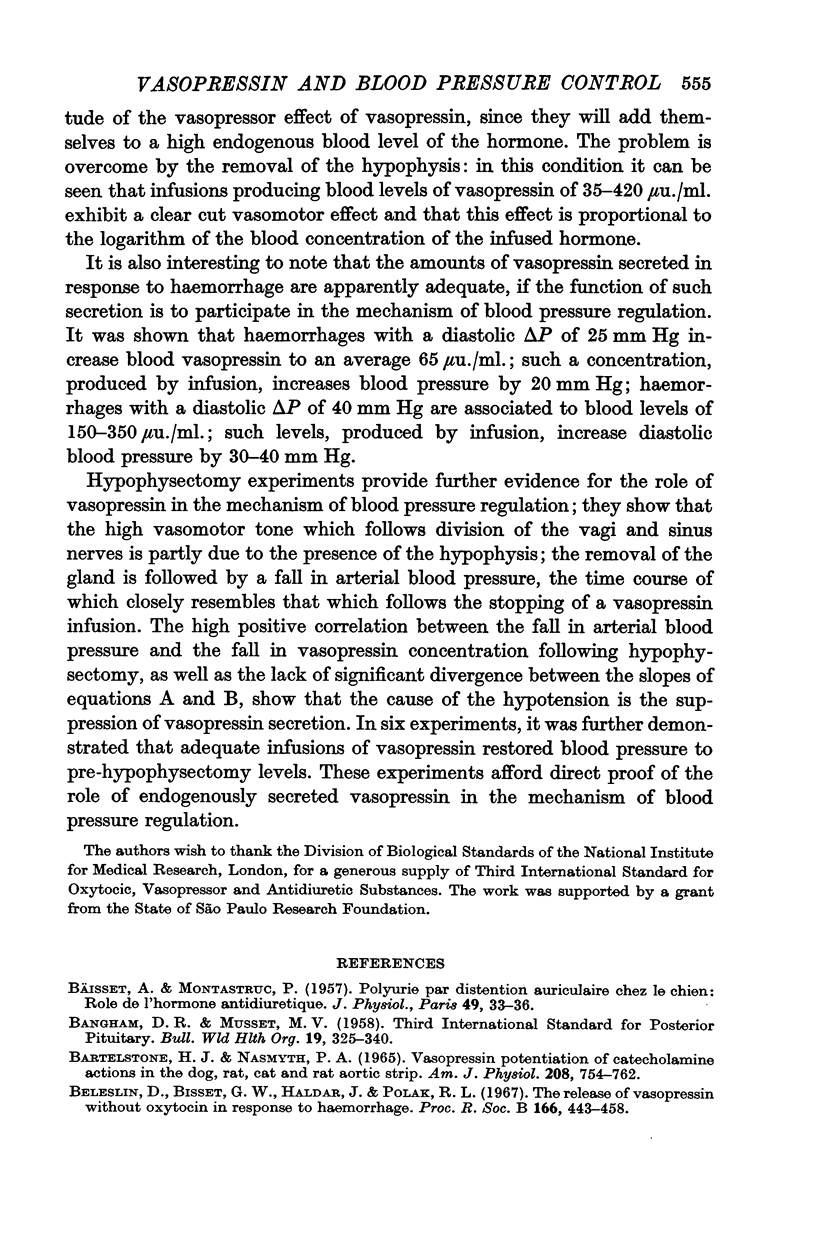
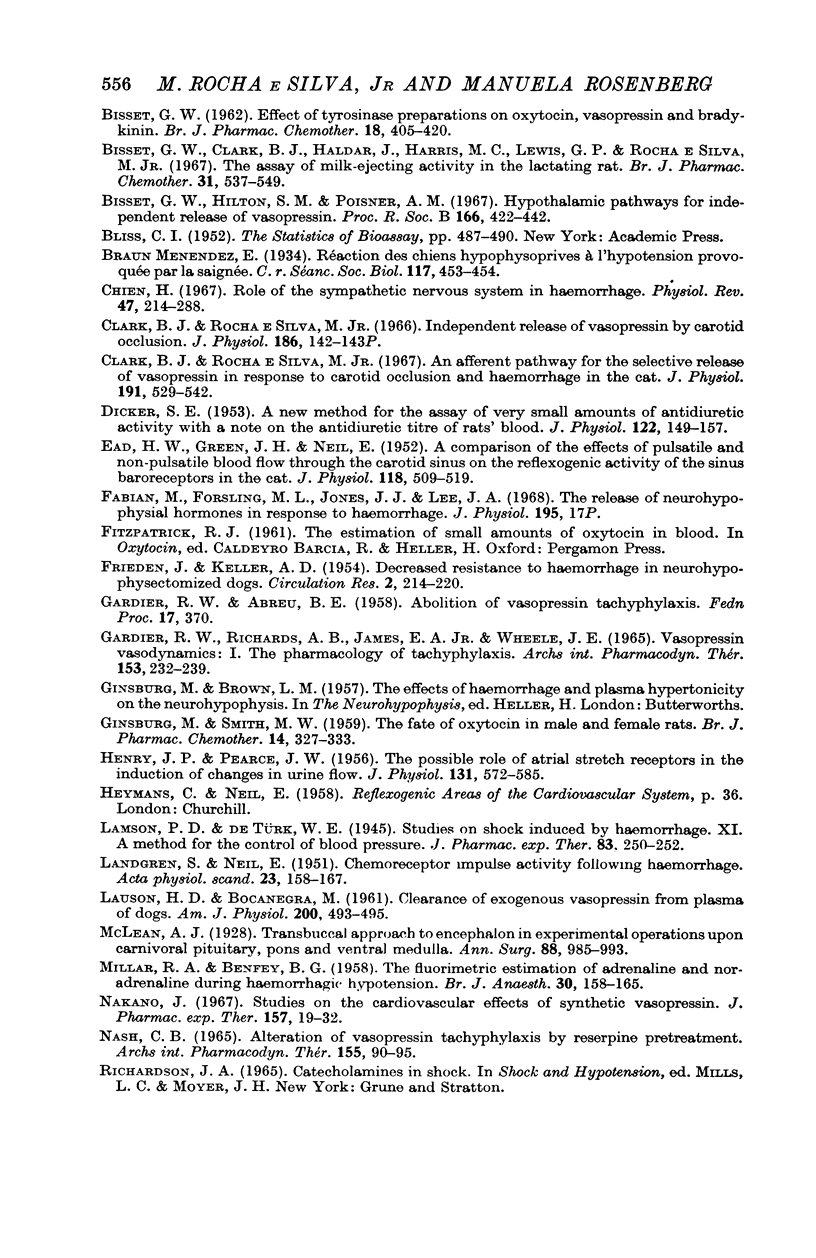
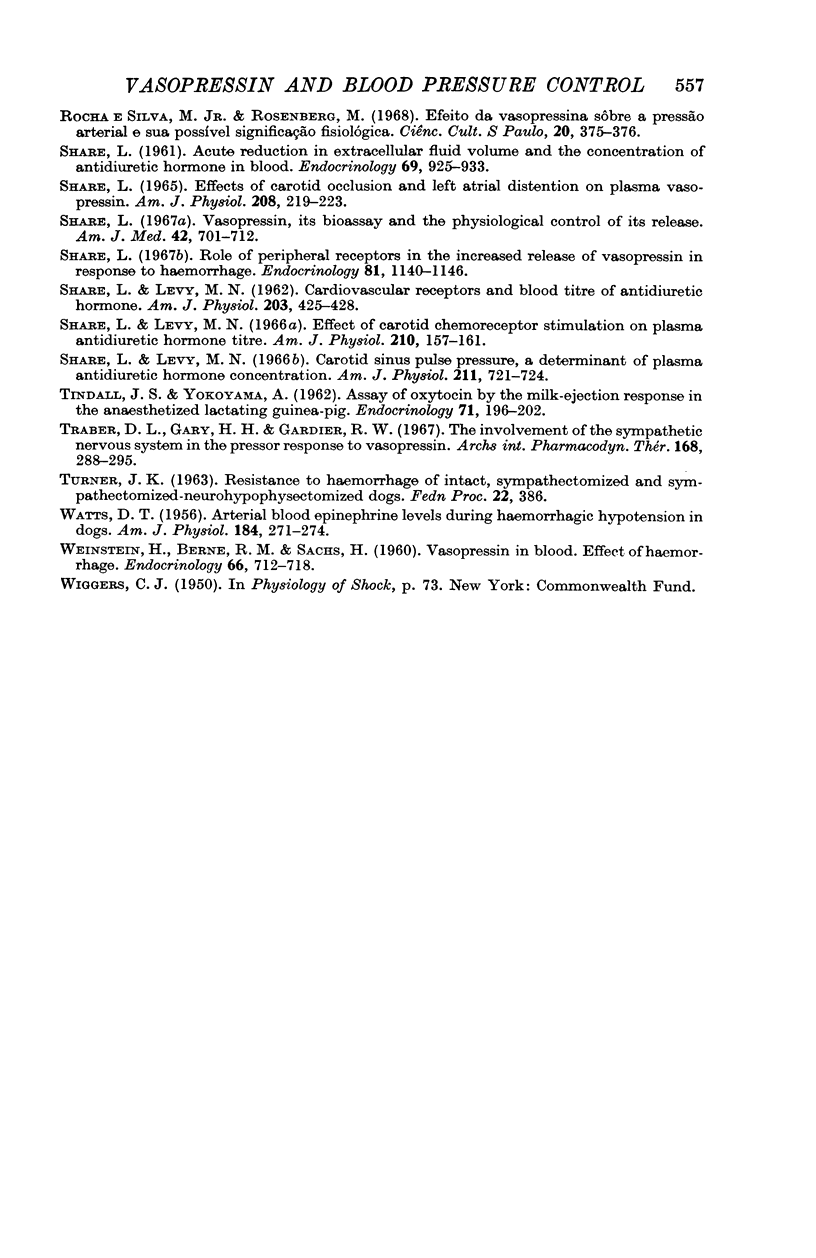
Selected References
These references are in PubMed. This may not be the complete list of references from this article.
- BAISSET A., MONTASTRUC P. Polyurie par distension auriculaire chez le chien; rôle de l'hormone antidiurétique. J Physiol (Paris) 1957 Jan-Mar;49(1):33–36. [PubMed] [Google Scholar]
- BANGHAM D. R., MUSSETT M. V. Third international standard for posterior pituitary; re-named third international standard for oxytocic, vasopressor and antidiuretic substances in 1956. Bull World Health Organ. 1958;19(2):325–340. [PMC free article] [PubMed] [Google Scholar]
- BARTELSTONE H. J., NASMYTH P. A. VASOPRESSIN POTENTIATION OF CATECHOLAMINE ACTIONS IN DOG, RAT, CAT, AND RAT AORTIC STRIP. Am J Physiol. 1965 Apr;208:754–762. doi: 10.1152/ajplegacy.1965.208.4.754. [DOI] [PubMed] [Google Scholar]
- BISSET G. W. Effect of tyrosinase preparations on oxytocin, vasopressin and bradykinin. Br J Pharmacol Chemother. 1962 Apr;18:405–420. doi: 10.1111/j.1476-5381.1962.tb01420.x. [DOI] [PMC free article] [PubMed] [Google Scholar]
- Bisset G. W., Clark B. J., Haldar J., Harris M. C., Lewis G. P., Rocha e Silva R., Jr The assay of milk-ejecting activity in the lactating rat. Br J Pharmacol Chemother. 1967 Nov;31(3):537–549. doi: 10.1111/j.1476-5381.1967.tb00418.x. [DOI] [PMC free article] [PubMed] [Google Scholar]
- Chien S. Role of the sympathetic nervous system in hemorrhage. Physiol Rev. 1967 Apr;47(2):214–288. doi: 10.1152/physrev.1967.47.2.214. [DOI] [PubMed] [Google Scholar]
- Clark B. J., Silva MR Jr E. An afferent pathway for the selective release of vasopressin in response to carotid occlusion and haemorrhage in the cat. J Physiol. 1967 Aug;191(3):529–542. doi: 10.1113/jphysiol.1967.sp008266. [DOI] [PMC free article] [PubMed] [Google Scholar]
- DICKER S. E. A method for the assay of very small amounts of antidiuretic activity with a note on the antidiuretic titre of rat's blood. J Physiol. 1953 Oct;122(1):149–157. doi: 10.1113/jphysiol.1953.sp004986. [DOI] [PMC free article] [PubMed] [Google Scholar]
- EAD H. W., GREEN J. H., NEIL E. A comparison of the effects of pulsatile and non-pulsatile blood flow through the carotid sinus on the reflexogenic activity of the sinus baroceptors in the cat. J Physiol. 1952 Dec;118(4):509–519. doi: 10.1113/jphysiol.1952.sp004812. [DOI] [PMC free article] [PubMed] [Google Scholar]
- FRIEDEN J., KELLER A. D. Decreased resistance to hemorrhage in neurohypophysectomized dogs. Circ Res. 1954 May;2(3):214–220. doi: 10.1161/01.res.2.3.214. [DOI] [PubMed] [Google Scholar]
- Fabian M., Forsling M. L., Jones J. J., Lee J. The release of neurohypophyseal hormones in response to haemorrhage. J Physiol. 1968 Mar;195(2):17P–18P. [PubMed] [Google Scholar]
- GINSBURG M., SMITH M. W. The fate of oxytocin in male and female rats. Br J Pharmacol Chemother. 1959 Sep;14:327–333. doi: 10.1111/j.1476-5381.1959.tb00252.x. [DOI] [PMC free article] [PubMed] [Google Scholar]
- HENRY J. P., PEARCE J. W. The possible role of cardiac atrial stretch receptors in the induction of changes in urine flow. J Physiol. 1956 Mar 28;131(3):572–585. doi: 10.1113/jphysiol.1956.sp005483. [DOI] [PMC free article] [PubMed] [Google Scholar]
- LANDGREN S., NEIL E. Chemoreceptor impulse activity following haemorrhage. Acta Physiol Scand. 1951 Aug 25;23(2-3):158–167. doi: 10.1111/j.1748-1716.1951.tb00805.x. [DOI] [PubMed] [Google Scholar]
- LAUSON H. D., BOCANEGRA M. Clearance of exogenous vasopressin from plasma of dogs. Am J Physiol. 1961 Mar;200:493–497. doi: 10.1152/ajplegacy.1961.200.3.493. [DOI] [PubMed] [Google Scholar]
- MILLAR R. A., BENFEY B. G. The fluorimetric estimation of adrenaline and noradrenaline during haemorrhagic hypotension. Br J Anaesth. 1958 Apr;30(4):158–165. doi: 10.1093/bja/30.4.158. [DOI] [PubMed] [Google Scholar]
- McLean A. J. TRANSBUCCAL APPROACH TO THE ENCEPHALON: IN EXPERIMENTAL OPERATIONS UPON CARNIVORAL PITUITARY, PONS, AND VENTRAL MEDULLA. Ann Surg. 1928 Dec;88(6):985–993. doi: 10.1097/00000658-192812000-00003. [DOI] [PMC free article] [PubMed] [Google Scholar]
- Nakano J. Studies on the cardiovascular effects of synthetic vasopressin. J Pharmacol Exp Ther. 1967 Jul;157(1):19–31. [PubMed] [Google Scholar]
- Nash C. B. Alteration of vasopressin tachyphylaxis by reserpine pretreatment. Arch Int Pharmacodyn Ther. 1965 May;155(1):90–95. [PubMed] [Google Scholar]
- SHARE L. Acute reduction in extracellular fluid volume and the concentration of antidiuretic hormone in blood. Endocrinology. 1961 Nov;69:925–933. doi: 10.1210/endo-69-5-925. [DOI] [PubMed] [Google Scholar]
- SHARE L. EFFECTS OF CAROTID OCCLUSION AND LEFT ATRIAL DISTENTION ON PLASMA VASOPRESSIN TITER. Am J Physiol. 1965 Feb;208:219–223. doi: 10.1152/ajplegacy.1965.208.2.219. [DOI] [PubMed] [Google Scholar]
- SHARE L., LEVY M. N. Cardiovascular receptors and blood titer of antidiuretic hormone. Am J Physiol. 1962 Sep;203:425–428. doi: 10.1152/ajplegacy.1962.203.3.425. [DOI] [PubMed] [Google Scholar]
- Share L., Levy M. N. Carotid sinus pulse pressure, a determinant of plasma antidiuretic hormone concentration. Am J Physiol. 1966 Sep;211(3):721–724. doi: 10.1152/ajplegacy.1966.211.3.721. [DOI] [PubMed] [Google Scholar]
- Share L. Rol of peripheral receptors in the increased release of vasopressin in response to hemorrhage. Endocrinology. 1967 Nov;81(5):1140–1146. doi: 10.1210/endo-81-5-1140. [DOI] [PubMed] [Google Scholar]
- Share L. Vasopressin, its bioassay and the physiological control of its release. Am J Med. 1967 May;42(5):701–712. doi: 10.1016/0002-9343(67)90090-3. [DOI] [PubMed] [Google Scholar]
- TINDAL J. S., YOKOYAMA A. Assay of oxytocin by the milk-ejection response in the anesthetized lactating guinea pig. Endocrinology. 1962 Aug;71:196–202. doi: 10.1210/endo-71-2-196. [DOI] [PubMed] [Google Scholar]
- Traber D. L., Gary H. H., Gardier R. W. The involvement of the sympathetic nervous system in the pressor response to vasopressin. Arch Int Pharmacodyn Ther. 1967 Aug;168(2):288–295. [PubMed] [Google Scholar]
- WATTS D. T. Arterial blood epinephrine levels during hemorrhagic hypotension in dogs. Am J Physiol. 1956 Feb;184(2):271–274. doi: 10.1152/ajplegacy.1956.184.2.271. [DOI] [PubMed] [Google Scholar]
- WEINSTEIN H., BERNE R. M., SACHS H. Vasopressin in blood: effect of hemorrhage. Endocrinology. 1960 May;66:712–718. doi: 10.1210/endo-66-5-712. [DOI] [PubMed] [Google Scholar]


